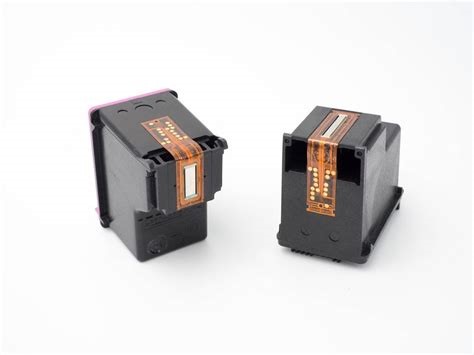| Vocademy |
Ink jet
Inkjet printers were originally exotic but are now the most popular type. They work by shooting tiny drops of ink at the paper. The various mechanisms to create and project the drops are discussed below.
Inkjet printers come in small sizes for printing 5 x 7 pictures, sizes for printing on regular office paper, large sizes for printing posters and wall art, and even giant sizes for printing strips to be assembled into roadside billboards.
 |
|
|
Printing mechanisms
Bubble jet
Tiny heaters form steam bubbles that force ink out of the print head.
Piezoelectric
Crystals distort when voltage is applied across them. Piezoelectric printers have crystal actuators that force ink out of the print head.
Two types of ink are available for inkjet printers. These are ink for regular printing and ink for printing photographs. Photographs should be printed on special photographic paper.
Ink for inkjet printers often comes packaged in a disposable printhead or non-refillable cartridge.
 |
|
|
However, some manufacturers, notably Epson, produce printers with refillable ink reservoirs and permanent print heads. The latter are much less expensive to operate.
Ink cartridges (which often include the print head) can be refilled by the consumer, and refill kits are available. However, some manufacturers make cartridges that cannot be used if refilled. This is usually accomplished by embedding a memory chip or microcontroller in the cartridge that indicates if the cartridge has ever become empty or has been used for a specific time.[3] Some printer cartridges become disabled after a specific time or number of printed pages, etc., even though they still have sufficient ink to work. Before buying a printer, this controversial practice should be investigated (I'm talking to you, Canon, and HP).
Some manufacturers (HP) provide ink by subscription. When using their subscription ink service, the print cartridges become disabled regularly, forcing you to replace the ink on schedule. The ink cartridges also become disabled at the end of the subscription period if the subscription is not renewed.
Ink sublimation
Ink or dye sublimation printers use heat to transfer dye to the printed object. Typically, the dye is a waxy solid on a ribbon, but some printers use liquid ink. Liquid ink printers are typically used for printing on fabric, where the fabric is heated after printing to set the dye.
Ink sublimation printers for office paper or photographs often use separate ribbon cartridges for each color. Those used for printing credit and ID cards often have the colors laid out sequentially on a single ribbon.
—————————| Vocademy |